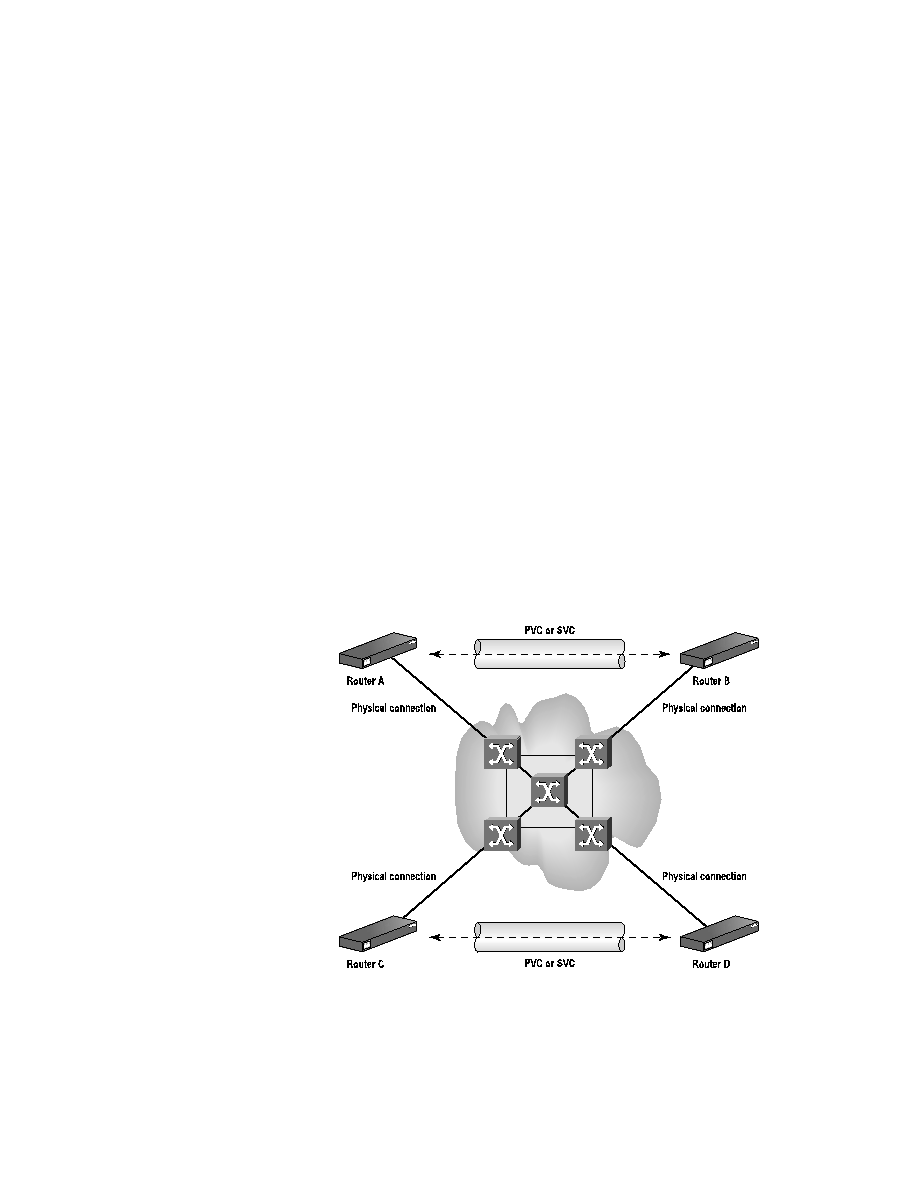
X.25 is responsible for upper-layer protocol agreement and data exchange.
Layer 2 X.25 uses LAPB as its protocol. Layer 1 X.25 maps to Layer 1 of the
OSI model, which is in charge of data transmission across the physical medium.
rier's switching network. The upper layers of X.25 are concerned only that
communication is established with the destination system. Once a virtual cir-
cuit is created, it has unique numerical identifiers assigned to it, which dis-
tinguish it from other connections.
has a virtual circuit to Router B, and Router C has a virtual circuit to Router
D. Within the switching cloud, Switches X and Y have two circuits running
on them. In order for these switches to keep data flowing to the right desti-
nations, they assign circuit identifiers to each virtual circuit. When a packet
is sent, it is told which virtual circuit it belongs to.